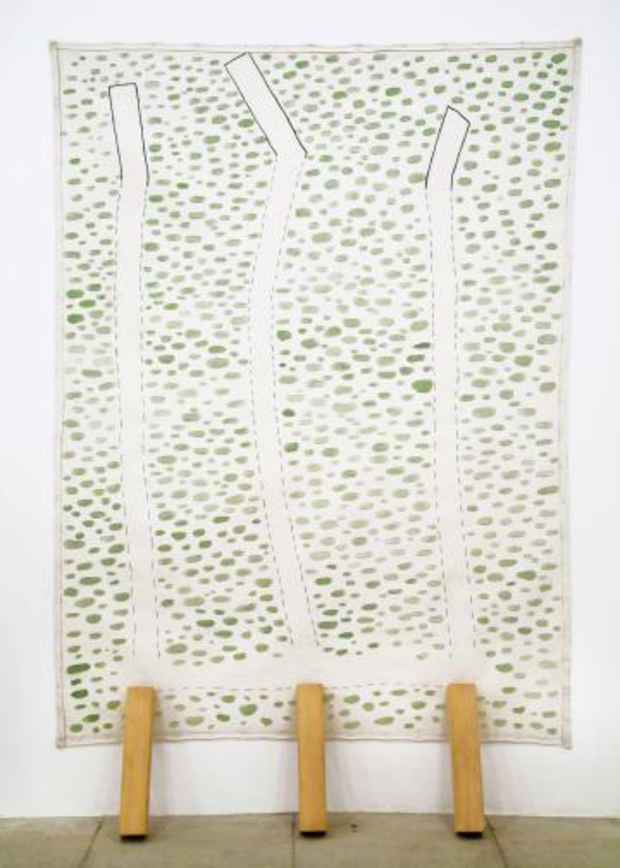“1965 - 1977” Exhibition
Alexander and Bonin

This event has ended.
1965 – 1977 includes key works by eight artists who responded to the aesthetics of minimalism and pop art with unique materials, processes, and content. Many of these paintings and sculptures represent early achievements made during the first stages of their careers.
The earliest works in the exhibition are Victor Grippo’s small, chromatically vibrant paintings from 1965. The imagery in these works was influenced by the design of electronic circuitry and presage Grippo’s use of scientific materials, minerals and commonplace objects to depict natural forms of energy.
Sylvia Plimack Mangold’s Floor I (1967) is the first of her paintings depicting a tilting floor plane of gridded parquet tiles. Plimack Mangold’s realistic iterations of constructed pictorial space retain their provocative relationship to the pure grids and systematic strategies employed by her peers.
Neil Jenney’s Linear Piece (1967) is composed of two sections of aluminum alloy bent into nearly identical shape by hand. While each half of the diptych conforms to the same design, the process reveals how handmade objects, even if serialized in their construction, are always unique.
Michael Buthe’s Untitled (1968-69) is comprised of two painted canvases stretched on the same support. The top canvas is torn and ripped away to reveal the monochrome square beneath, emphasizing the materiality and spatial potential of painting. Buthe’s torn canvas paintings were exhibited at museums in Amsterdam, Bern, and Wuppertal in the first year after they were created.
The box for Richard Artshchwager’s Locations (1969) is clad in his signature Formica and contains 5 blps made of wood, glass, Plexiglas and rubberized horsehair. Artschwager first exhibited his blps in the 1968 Whitney Annual.
Robert Kinmont’s wood, copper, and water construction, Source Support (1970-73), lays bare his philosophical and material orientation while succinctly conveying his commitment to precise, structural clarity. Kinmont grew up in the desert near Bishop and has lived most of his adult life in northern California, the landscape of which has continued to influence the majority of his projects.
Between 1968 and 1977, Ree Morton created a significant and varied body of work. Untitled (1973), is an un-stretched canvas with three wood blocks at the base which exemplifies the continuity between her abstract and nature based imagery. A complete set of studies for her final work, Manipulations of the Organic (1977) will also be exhibited.
During the 1970s, Paul Thek lived and worked primarily in Europe and constructed a series of large scale environments in collaboration with friends. Throughout that time Thek created a number of paintings on newspapers. Grasshopper and Dinosaur (1975) show their respective subjects depicted as tiny creatures against fields of grey paint, evoking the scale of his environments and theatrical projects.
[Image: Ree Morton “Untitled” (1973) watercolor, pencil and crayon on canvas with wood blocks, 96 x 68 1/2 in/244 x 174 cm]
Media
Schedule
from November 23, 2013 to January 04, 2014